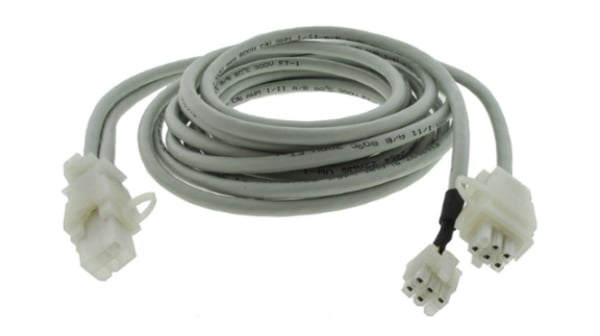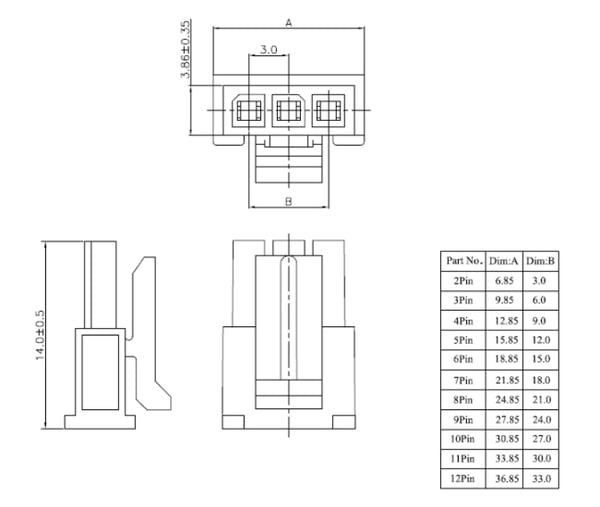There remains a misconception that borders on a cultural stigma towards off-brand or knockoff items. Consider your favorite breakfast cereal at your local supermarket as you walk down an aisle lined with name brand cereals strewn with cartoon characters and slogans, you may notice a less expensive version of the same exact cereal a few shelves lower. These off-brand cereals likely taste the same, have identical ingredients, but cost about half as much. Admittedly, my children prefer the name brand cereals, but when replaced with an off-brand equivalent of Special Popcorn Cereal, if I don’t show them the box, they will never know the difference.
The exact same concept is widespread in electronics, name brand cable connectors are specified on customers’ drawings while a form, fit, and function equivalent will absolutely do the job. This is commonly referred to as substitute or equivalent components. Many times, the equivalent component will have several benefits such as local availability, reduced lead time, and, most importantly, a significant cost reduction.
However, not all electrical components can be substituted so it is especially critical to review the product application and design details before moving in such a direction.
Product Qualification and the Impact on Substitute Components
Before one can consider using a substitute component, the application, industry, and qualification requirements must be assessed. For example, after a design has received an approval to be used on a civilian aircraft, switching to an alternate component (even with form, fit, and function equivalency) is absolutely forbidden. Similarly, other highly regulated industries such as medical or defense industries will encounter similar challenges in using equivalent components. There are times when dual qualification efforts are performed to mitigate sole sourced components or obsolescence forces an alternate component. These really are the few and only times when to consider an alternate component for these highly scrutinized industries.
For consumer products, industrial applications, and other markets with less oversight or criticality, the decision to allow substitute components typically falls upon the end customer or whomever has design authority. This practice is extremely common and sometimes necessary to support the frequent end of life (EOL) and product obsolesce. This practice is also necessary to mitigate long lead times and the logistical nightmares of sourcing hard to find components in certain manufacturing regions.
 Custom Cable Assembly Manufactured with Substitute Connectors
Custom Cable Assembly Manufactured with Substitute Connectors
When in doubt, consider consulting your cable assembly manufacturer to review the constraints and impacts of employing a substitute or equivalent component.
Matching Form, Fit, and Function on Substitute Components
There are multiple resources to assist in reviewing alternate components for your custom cable application. Many commercial off-the-shelf (COTS) manufacturers maintain cross reference lists to competitors’ products that offer form, fit, and function replacements. Even major online electronics distributors list both data sheets and suitable crosses {another term for equivalent substitute components}. Listed below are some considerations when seeking an equivalent component:
- Pin count and pitch
- Pin length and diameter
- Polarization or locking feature
- Interface tolerances
- Footprint
- Electrical rating
- Material compatibility
- EOL or planned obsolescence
- Flammability rating
 Example of a Substitute Connector Used in Cable Assemblies
Example of a Substitute Connector Used in Cable Assemblies
Multiple Benefits for the Right Projects
Local component sourcing is usually desirable for electrical manufacturing. This can help reduce supply chain risk and lower the effective product cost. Aside from the cost advantages of using an Asian equivalent component, there are times that North American name brand items that carry a +20-week lead time may be sourced locally in Asia.
It’s always best to plan for samples and mechanical fit checks in your build plan, this way a proper verification of all interconnects and mates can be performed. Although the use of suitable equivalents is not always a fit for every project, their benefits can provide tremendous value for the right ones.
Summary
Substituting cable connectors with form, fit, and function equivalents can significantly reduce costs, improve lead times, and ease sourcing challenges. While highly regulated industries like aerospace, medical, and defense typically prohibit alternate components after qualification, consumer and industrial markets often encourage their use to combat obsolescence and supply chain risks. By evaluating mechanical, electrical, and material compatibility, as well as using cross-reference tools and manufacturer expertise, companies can identify reliable substitutes. When properly applied, substitute connectors provide strong performance with lower costs and improved supply stability, making them a practical solution for many projects.
Key Takeaways
- Regulated vs. flexible markets: In aerospace, defense, and medical industries, once qualified, components cannot be substituted. In consumer and industrial markets, substitutions are often allowed and necessary.
- Common drivers for substitution: End-of-life (EOL), long lead times, and sourcing challenges frequently push manufacturers to consider equivalent components.
- Form, fit, and function criteria: Key factors when evaluating substitutes include pin count, pitch, length, locking features, tolerances, electrical ratings, and material compatibility.
- Supply chain and cost advantages: Local sourcing and Asian equivalents can reduce lead times, mitigate supply risks, and lower overall product costs.
- Validation is essential: Always plan for samples, fit checks, and customer approval to ensure substituted connectors meet performance and compliance requirements.
















